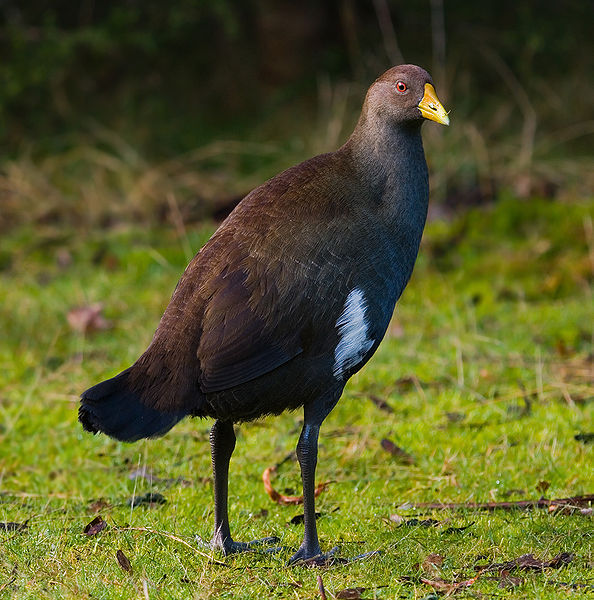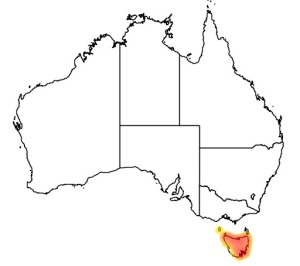Colours
Distinguishing features
The Tasmanian Nativehen is a stocky flightless bird. The upperparts are olive brown with a white patch on the flank. The underparts are darker with a bluish grey tinge. The short tail is close to black and mostly held erect. The legs are thick and powerful, with a grey scaly appearance and sharp claws. The eyes are bright red. The bill has a small frontal shield and is a greenish yellow colour.
The juvenile bird is similar in appearance to the adult, but the colours are more subdued on the body and the underparts have fine white spots. The bill is greenish yellow and the eyes are bright red. Male birds generally have longer bills and legs, though there is enough overlap that the sexes are indistinguishable, even in the hand. (Wikipedia)
Size
- From 41 cm to 53 cm (Length of specimen) - applies to Adults
Wingspan
- Wingspan data is not yet available.
Synonyms
Distribution
Distribution and habitat preferences
It is endemic to the Australian island of Tasmania. ��������The Tasmanian Nativehen is a sedentary species, living around open grassy areas close to water. It is widespread in Tasmania apart from the west and south west regions. It is not found on King or Flinders Islands in Bass Strait,[8] though Michael Sharland does record it as being on Flinders Island. A population introduced to Maria Island is now well established. It is generally common and easily seen around bodies of water that have grassy verges. (Wikipedia)
Diet
The diet of the Tasmanian Nativehen is mostly made up of grass shoots and the leaves of low herbs which it grazes during daylight hours. Birds will also eat insects, seeds and orchard fruit. (Wikipedia)


